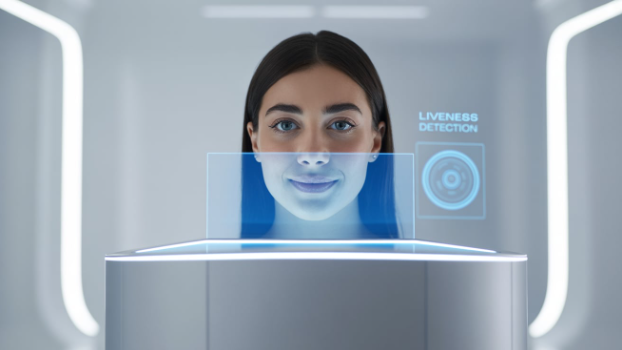The act of implementing digital technology to build new business processes, cultures, and customer experiences—or adapt current ones—to satisfy all-the-time-changing business and market requirements is known as digital transformation. Digital transformation refers to the reinvention of the company in the digital age.
It transcends traditional jobs like marketing, sales, and customer service. Instead, the way you think about and interact with customers is where digital transformation both starts and ends. With digital technology on our side, we can rethink how we conduct business and interact with our customers as we go from paper to spreadsheets to innovative applications for managing our business.
What services does digital transformation include?
There are different types of digital transformation services. They include, for example, IoT development, R&D services, MVP development, UI/UX, mobile development, web development, DevOps services, cloud services, and post-production support. Let’s find out what all of these terms mean.
IoT development. Organizations enter into agreements with external suppliers to design, develop, deploy, and operate Internet of Things (IoT) solutions. It includes consulting services for IoT planning.
R&D services. The process through which a business creates new information that it may utilize to build new technologies, products, services, or systems that it will either employ internally or sell is known as research and development, or R&D.
MVP development. The term “MVP,” or “minimum viable product,” refers to a product that comprises just enough features to pull in early adopters and validate a product concept. In areas like software, the MVP can assist the product team in collecting customer info as soon as possible to perform iterations and enhance the product. The MVP is essential to agile development since the agile process is centered on validating and refining products based on user feedback.
UI/UX. When using a website, app, or other electronic devices, you interact with screens, buttons, toggles, icons, and other visual elements, referred to as user interfaces (UI). UX describes your overall experience using a product, including the feelings you get during that experience.
Mobile development. A typical mobile application uses a network connection to interact with remote computing resources. Mobile app development is the process of building software applications that operate on mobile devices and bring your business closer to users.
DevOps services. The combination of cultural philosophies, practices, and tools known as DevOps improves an organization’s capacity to deliver applications and services at high velocity: products advance and improve in organizations more rapidly than they would by using traditional software development and infrastructure management processes.
Cloud services. Infrastructure, platforms, or software that are hosted by external providers and made accessible to users online are referred to as cloud services.
Cloud services simplify the process for user data to move back and forth from front-end clients to provider systems through the internet. Cloud services stir up the development of cloud-native apps and the compliance of cloud-based activities. Everything users need to use cloud services is a computer, an operating system, and an internet connection.
Post-production support. Something to guarantee ongoing and cost-effective logistical assistance and system administration following the completion of final product production.
Congrats! Now you know the explanations of the main digital transformation services.
Why Digital Transformation, you ask?
The industry has undergone a wide range of transformations, starting with resource-centric, moving on to budget-centric, and ending up with customer-centric.
What fuels this fad?
To secure the success of the digital transformation services, the solution is the crucial requirement for a “Digital Capabilities driven End-user Experience,” and:
Workforce engagement is important because of the growing demand for remote work access and ongoing access to technology.
Data protection from breaches and cyber threats, as well as data security and compliance.
The establishment of an effective network is required due to an increasing reliance on outbound organizations, distributors, and suppliers.
In 2022, what will be the major developments in digital transformation?
According to Stephanie Overby of Enterprisers, the epidemic has increased the urgency of digital transformation. Some CIOs and IT organizations have attained a level of velocity change that was previously unheard of. CEOs today believe that boosting digital transformation is essential to future success. Digitalization has been crucial to organizations’ responses and future strategies as they have dealt with the upheavals caused by the pandemic, says Overby.
Red Hat’s principal architect, E.G., Nadhan, observes: “Even businesses that have started multi-year transformational journeys have got the need to make adjustments in the middle of such journeys, as they should. Resilience serves as the key phrase in defining the goal of digital transformation in 2022. The epidemic showed businesses how important it is to be ready for any sudden changes in consumer demands and market dynamics. The capacity to efficiently pivot and manage change with little to no impact on internal and external customers will be a goal for forward-thinking businesses.”
“The use of simulated environments for experimenting with programmable factors to forecast enterprise behavior will receive more attention. Additionally, such research will provide a deeper understanding of the most resilient ideal setups, “Nadhan declares.
Think about the following eight significant developments in digital transformation that business and IT leaders need to be aware of in 2022:
emphasis on sustainability and resiliency
a focus on exploiting cloud technology to support innovation
automating business operations with AI
continued acceptance of working remotely
more emphasis is placed on controlling data over its full lifecycle
businesses must prioritize security; it cannot be an afterthought
putting a focus on AI ethics and management
increased usage of machine learning technology in their development
We hope this information was useful and compelling for you. Take care!
Visit TheInspireSpy











